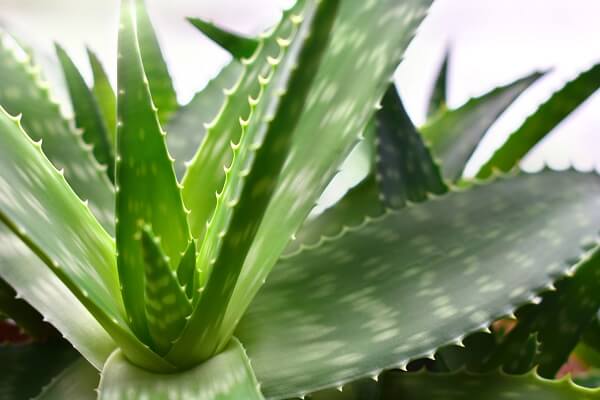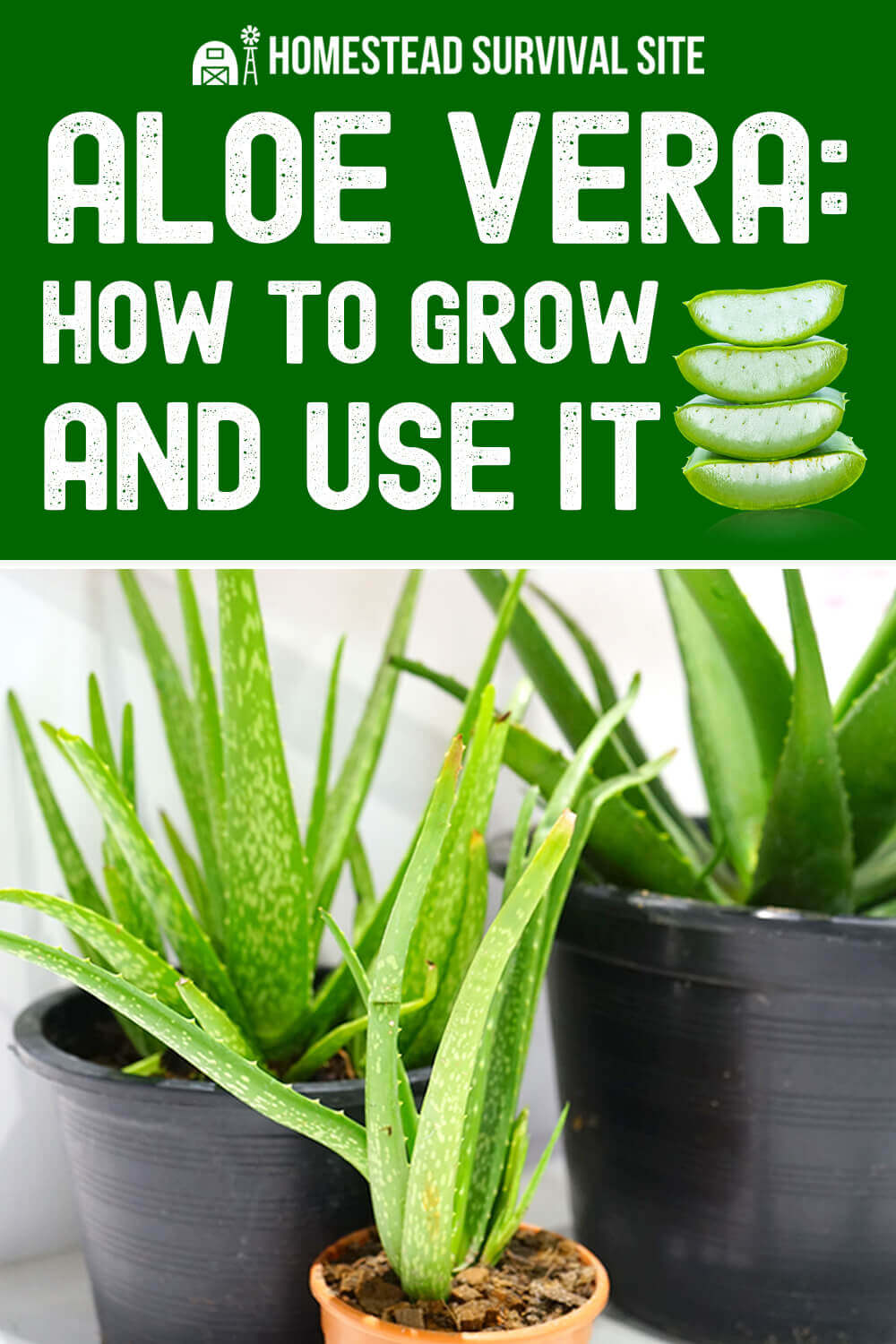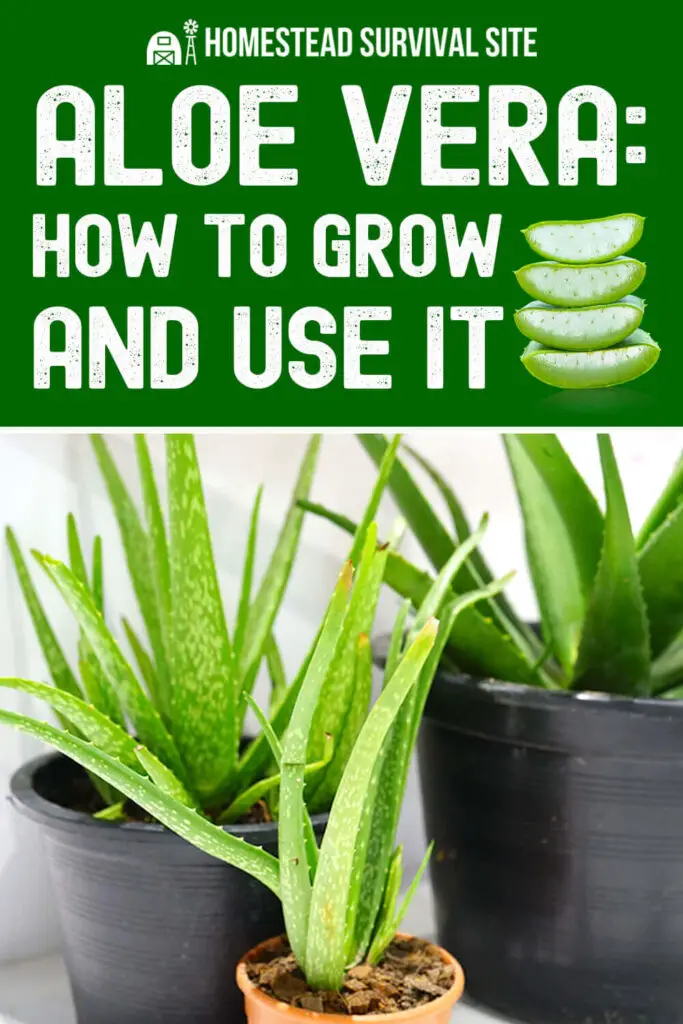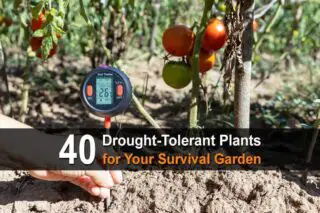Estimated reading time: 6 minutes
Disclaimer: I am not a medical doctor and nothing in this article should be taken as medical advice. Please talk to your doctor before using any of the herbs and/or remedies mentioned in this article.
You’ve probably heard about the healing powers of the aloe vera plant for sunburn, but did you know it can also be used as a hair conditioner, as a liquid tonic, and to treat other skin conditions? What’s even better is that aloe vera is easy to grow and would be a great addition to your homestead’s indoor and, possibly, your outdoor garden.
A succulent plant species of the genus Aloe, the aloe vera most likely originated in Africa, and historical records trace its cultivation back to at least 200 B.C. Today, the adaptable evergreen perennial can be found in every tropical region of the world.
Aloe vera plants have attractive, thick, variegated leaves that grow out in a fan formation from the plant’s main stem. Please take note that neither humans nor pets should eat the leaves themselves since they have toxic properties.
Want to save this post for later? Click Here to Pin It on Pinterest!
How To Grow Aloe Vera Indoors
Aloe vera is a very forgiving and hardy houseplant. It does best when planted in a wide container with a potting mix that is made for succulents and cacti. To avoid wilting and rotting, make sure the plant has adequate drainage.
Place the container in an area that is exposed to bright, indirect sunlight and maintains a temperature range of 55 to 80°F.
The aloe vera’s roots can be damaged by overwatering, and it actually thrives when its soil is allowed to dry out in between waterings. Try watering your houseplant about every three weeks, using your finger to test dryness before adding more water.
Fertilize about once a month in the spring and summer with a balanced houseplant formula mixed at half strength. Repot in a larger container when the plant becomes root bound.

Propagation
Healthy aloe vera plants regularly produce buds, or plantlets, that can be removed to produce new plants. Find where these new offsets are attached to the mother plant and then cut them off with a sharp knife.
Allow both the cuts on the mother plant and on the plantlets to callus over for a day or two before planting the buds each in separate containers with your succulent potting mix. Place the containers in a sunny location. Wait a week before watering and water sparingly after that.
How To Grow Aloe Vera Outdoors
You can move your indoor potted aloe vera plants outdoors during the summer if you live in Zones 9 or greater. Some gardeners have success with growing the succulent in protected outdoor areas even in Zone 8.
To minimize overexposure to the sun, place your pots in a shady location at first, moving them little by little every few days until they reach an area with full sun exposure.
Freezing temperatures will burn or kill the aloe vera’s leaves, but if the soil itself does not freeze, the plant will survive.
Look for well-draining sunny locations if you are planting aloe vera plants directly into the ground. Outdoors, the aloe vera only needs watering if it hasn’t rained for a month or more. If that happens, give the plant a good soaking and then let the soil completely dry out before watering again.
Flowering
Occasionally, the aloe vera will produce a long stalk with tiny, bell-shaped flowers. It’s a good idea to snip the flower stalk off near its base after the flowers have faded.
Harvesting
It is the gel inside the aloe vera’s leaves that has healing properties, and it is easy to harvest this thick clear liquid.
- Remove a mature leaf from the plant and slice it lengthwise with a sharp knife.
- Squeeze the gel out of the leaf and apply it directly to your skin or place the opened leaf with its gel-side down on the affected area.
To harvest larger amounts of juice, cut leaves off as close to the stem as possible and slice each one open lengthwise. Then, use a spoon to scrape the gel out of each leaf half. You can store the gel in the refrigerator for up to a week. Another idea is to scrape the gel into ice cube trays for longer storage in the freezer.
This video explains the harvesting process:
Other Uses For Aloe Vera
Hair Conditioner – Mix together equal amounts of aloe vera juice and water, adding a drop or two of essential oil if you prefer.
Face Lotion – Aloe vera gel helps treat psoriasis, eczema, and rosacea. It has anti-bacterial properties, so it can be part of a daily cleanser or face mask. Learn how to make face lotion by watching this video.
Healing Tonic – You also can consume aloe vera juice for health purposes. According to Prevention Magazine, drinking aloe vera juice boosts immunity, reduces inflammation, helps speed healing, stimulates digestion, detoxifies the body, helps regulate pH balance, protects the heart, increases hydration, and relieves heartburn and constipation.
Here’s how to make aloe vera juice:
Aloe vera plants come in many colors, shapes, and sizes, ranging from just a few inches tall to the giant 30- to 40-foot-tall kokerboom (quiver tree).
Here are some additional tips regarding these amazing plants:
- If the outer leaves droop or discolor, it is okay to snip them off the plant.
- Whether you plan to replant them or not, it is best to remove any offshoots for the health of your parent plant.
- Make sure your pot or container has adequate drainage holes. Insufficient drainage is the biggest problem people have with growing aloe vera.
- Aloe vera plants can become top-heavy over time and can even uproot themselves. You can prevent this problem by snipping away some of the heavy outer leaves.
- Aloe vera leaves can look sharp and menacing, but, unlike cactus leaves, they are soft to the touch.
Having an aloe vera plant or two around your homestead is an inexpensive and easy way to provide pain relief and healing to your family.
Like this post? Don't forget to Pin It on Pinterest!












